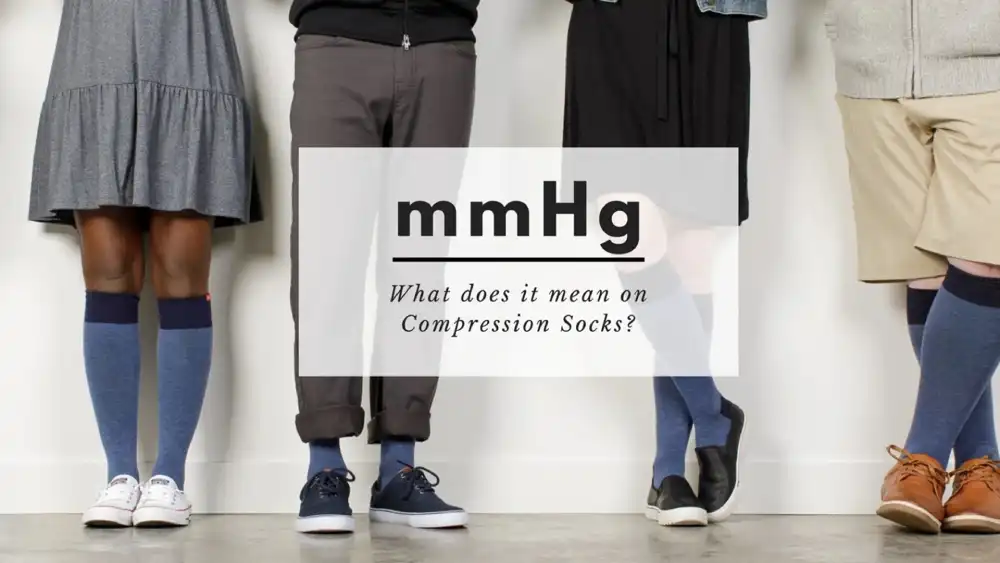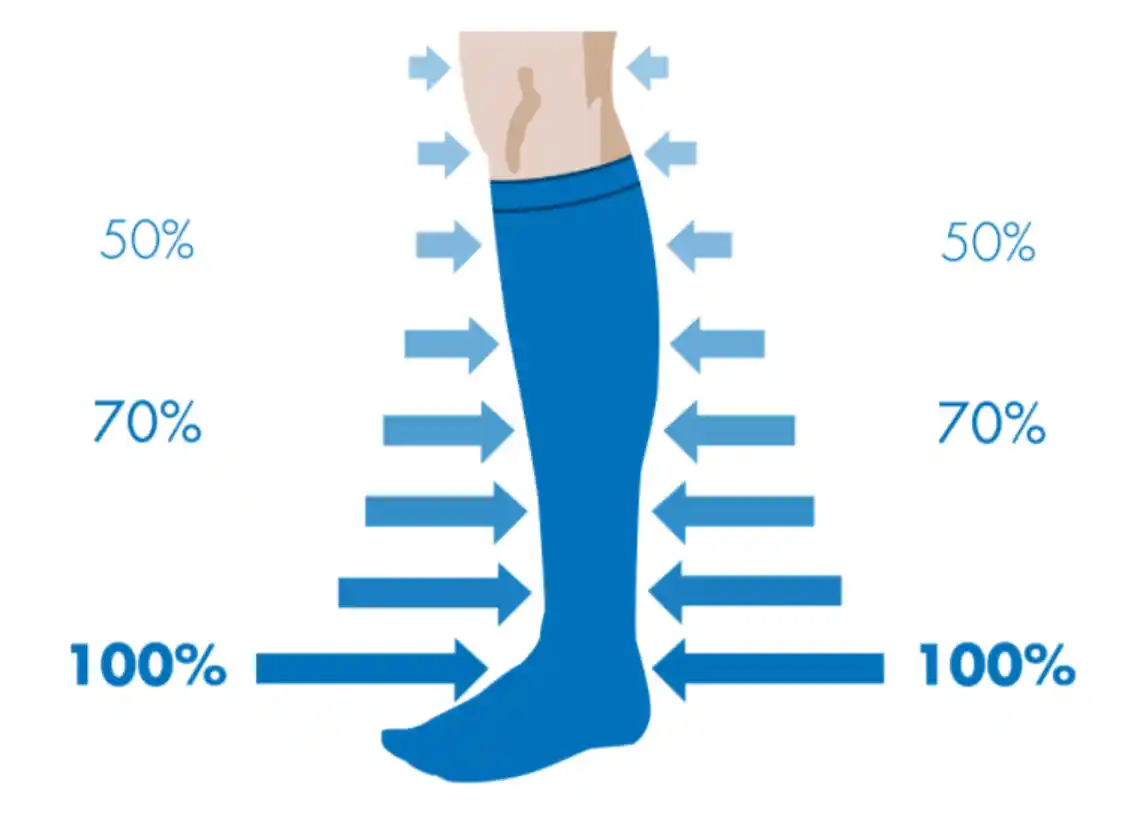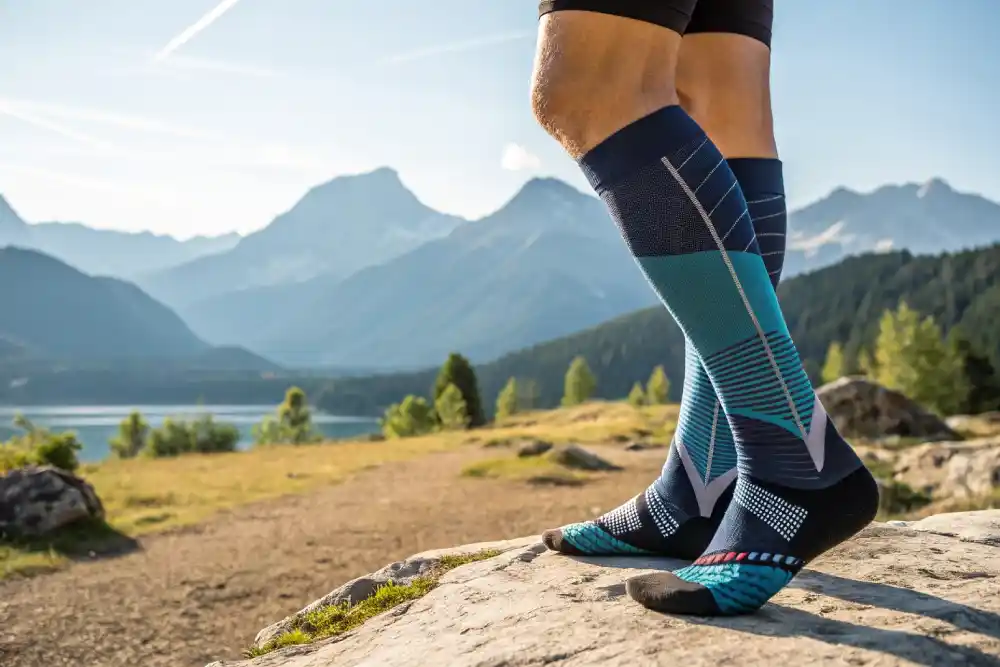Introduction
Compression socks are a vital product in today’s market, but with so many options available, how do you know which one will truly meet your customers’ needs? One key figure that often pops up is 15-20 mmHg—but what does this number really mean, and why should it matter to you as a brand or retailer? For your business, understanding compression levels is not just about product knowledge; it’s about tapping into a growing demand for effective, comfortable solutions that your customers can rely on. Offering the right compression level can set you apart from competitors and increase customer satisfaction, whether your clientele includes athletes, professionals, or individuals seeking daily comfort.
The term 15-20 mmHg indicates a moderate level of compression, measured in “millimeters of mercury.” This is the most common and versatile pressure, ideal for all-day wear to energize legs, prevent minor swelling, and relieve aches caused by travel, pregnancy, or long periods of standing.
In this post, we’ll explore how 15-20 mmHg compression socks can improve circulation, alleviate pain, and enhance performance—helping you create a product line that stands out.

What Does 15-20 mmHg Mean for Compression Socks?
When you see “15-20 mmHg” on compression sock packaging, it’s referring to the level of pressure the socks apply to the legs. MMHg stands for millimeters of mercury, a unit of measurement used in pressure. The 15-20 mmHg range is considered mild to moderate compression, making it suitable for a variety of customers. This level of pressure is designed to provide enough support for individuals who need relief from common issues like swelling or fatigue, without being too tight or uncomfortable.
For your customers, these socks work by gently squeezing the legs, which helps improve circulation. This boost in blood flow can reduce swelling and increase oxygen delivery to muscles and tissues. As a result, the wearer’s legs feel less tired and more energized, which is especially beneficial for people who stand for long periods or engage in physical activities. With 15-20 mmHg compression, customers can experience noticeable comfort and support throughout the day, helping them stay active and pain-free.
The Key Benefits of 15-20 mmHg Compression Socks
Reducing Swelling, Fatigue, and Enhancing Blood Flow
15-20 mmHg compression socks are designed to help reduce swelling and improve blood flow. They provide the ideal level of pressure for preventing mild swelling and leg fatigue during daily activities or travel. These socks help promote venous blood return, which reduces swelling and discomfort, making them an ideal solution for customers with long hours of standing or sitting.
Supporting Recovery for Athletes and Active Individuals
For athletes or active individuals, these compression socks can play a key role in recovery. After intense physical activity, muscles need proper circulation to repair and rebuild. The moderate pressure provided by 15-20 mmHg socks helps reduce muscle soreness and stiffness by encouraging blood flow and oxygen delivery to fatigued muscles. This support speeds up recovery times, allowing athletes to get back to their training routine quicker and with less discomfort.
Relieving Common Foot and Leg Ailments
People with mild circulatory problems, such as early-stage varicose veins or mild swelling, can also experience relief. The gentle yet effective compression improves circulation, helping prevent leg discomfort without the restriction that stronger compression levels might cause.

Who Should Wear 15-20 mmHg Compression Socks?
Ideal for Active Customers, Athletes, and People with Occupations Involving Long Hours of Standing or Sitting
15-20 mmHg socks are particularly beneficial for individuals who are consistently on their feet or lead an active lifestyle. Athletes, fitness enthusiasts, and workers in industries like retail or healthcare often deal with leg fatigue or discomfort. These socks offer a moderate level of support to help reduce swelling and promote blood circulation, making them an essential accessory for anyone on the go. By offering them, you can attract a customer base that values both comfort and performance, helping to prevent the discomfort that often comes with prolonged standing or intense physical activity.
A Solution for Mild Circulatory Issues
This compression range is ideal for individuals dealing with minor circulatory problems. Customers with mild symptoms, such as early signs of varicose veins, occasional swelling, or tired legs, can benefit greatly from the gentle pressure these socks provide. The 15-20 mmHg level supports healthy circulation, reducing the strain on veins and tissues, which helps alleviate discomfort without being overly tight. By offering these socks, you can provide a simple, effective solution for customers looking for everyday relief from mild circulatory concerns.
How to Choose the Right Compression Sock for Your Brand’s Customers
Considerations for Retailers When Selecting Compression Socks
When choosing the right compression sock for your product line, it’s important to consider your target market’s specific needs. Start by identifying whether your customers are athletes, office workers, or people dealing with circulatory issues. For example, athletes may prefer socks with more durability and breathability, while those seeking relief from leg fatigue or swelling will need a more focused compression level. Offering a variety of colors, designs, and materials can also make your product line more appealing, as customers appreciate options that fit their style and comfort preferences. By understanding the needs of your audience, you can select the right socks that deliver both performance and comfort.
Pressure Levels and Applicable Scenarios for Compression Socks
Compression socks come in various pressure levels, each designed to address specific needs. For instance, socks in the 8-15 mmHg range provide mild compression and are ideal for daily wear by people who stand or sit for long periods. They help relieve mild leg soreness, fatigue, and swelling, and are effective for preventing spider veins and varicose veins during pregnancy.
15-20 mmHg socks, on the other hand, are suitable for preventing thrombosis during long-distance travel, reducing swelling during pregnancy, and addressing leg discomfort caused by prolonged standing. They are also beneficial for those dealing with mild symptoms of chronic venous insufficiency and frequent flyers who need to prevent leg swelling and deep vein thrombosis.
For more severe needs, socks with 20-30 mmHg provide stronger compression, suitable for individuals who experience calf swelling, varicose veins, or severe edema related to pregnancy. These are also effective for moderate symptoms like chronic pain and post-surgical recovery.
Higher compression levels such as 30-40 mmHg and 40-50 mmHg are used to treat more serious conditions, including deep vein thrombosis and severe venous insufficiency, often requiring a doctor’s prescription.

Contraindications: When Not to Use Compression Socks
Compression socks are not suitable for everyone. People with conditions like arterial insufficiency, intermittent claudication, ischemia, uncontrolled congestive heart failure, acute dermatitis, exudative skin diseases, skin sepsis, or signs of leg infection should avoid wearing compression socks. Retailers should encourage customers to consult a doctor if they have any of these conditions, ensuring that they are informed about their personal medical history before using compression socks. This ensures safe and effective use of the product.
Why 15-20 mmHg Compression Socks Are the Goldilocks Zone?
The 15-20 mmHg range is often considered the “Goldilocks Zone” for compression socks. It strikes a balance between comfort and effectiveness, providing just enough pressure to enhance circulation and reduce swelling, without being overly tight or restrictive. This makes them suitable for everyday wear for customers with a variety of needs, whether for work, travel, or daily comfort.
15-20 mmHg vs. Other Compression Levels: What Retailers Need to Know
Mild (8-15 mmHg) vs. Moderate (15-20 mmHg): Key Differences
Compression socks come in different pressure levels, each designed for specific needs. 8-15 mmHg is considered mild compression, ideal for people who need light support for minor leg discomfort or swelling. These socks are perfect for daily wear to prevent small issues like fatigue or spider veins. 15-20 mmHg, on the other hand, offers moderate compression, which is better for people with moderate swelling, long hours of standing, or those traveling long distances. It helps improve circulation and prevent more serious issues like deep vein thrombosis or mild venous insufficiency. Understanding these differences helps you offer the right product to meet your customers’ needs.
The difference between compression stockings and support stockings
“Support stockings” are often used to refer to medical compression stockings, but the two work in different ways. Support stockings mainly passively resist swelling, while compression stockings actively apply pressure to the leg veins to prevent venous dilation and promote venous blood return. Medical compression stockings are produced according to strict medical and technical specifications to ensure appropriate ankle pressure and progressive leg pressure.
Customizing 15-20 mmHg Compression Socks for Your Brand’s Needs
The Benefits of Customization for Retailers and Brands
Stand Out with Gradient Compression Engineering
Unlike generic designs, custom 15-20 mmHg garments use gradient pressure distribution—highest at the ankle (20 mmHg) and gradually decreasing upward. This science-backed design ensures optimal blood flow while avoiding discomfort, a detail competitors often overlook.
Tailor Materials to Audience Needs
Athletes prioritize breathable, sweat-wicking yarns for high-intensity use, while office workers value sleek, stretch-nylon blends that pair with formal attire. Customizing fabric blends lets you cater to niche markets, whether it’s anti-odor threads for healthcare workers or buttery-soft knits for pregnant clients.
Build Loyalty Through Design Versatility
Your logo isn’t just branding—it’s a symbol of reliability. Offer seasonal patterns for holiday markets, corporate colorways for wellness programs, or discreet tonal styles for medical clients.
How Custom Branding and Design Can Differentiate Your Product
Solve Unmet Customer Pain Points
Generic socks often fail to address specific needs—like airline crews needing extra arch support during 16-hour flights. Customization lets you incorporate features like reinforced heels for durability or cushioned soles for concrete-floor workers, turning your line into a purpose-built solution that competitors can’t replicate.
Harness Premium Packaging as a Marketing Tool
Pair your socks with inserts explaining the 15-20 mmHg science, care tips, or style guides. Brands using educational unboxing experiences see 22% higher social media mentions.



Conclusion
15–20 mmHg compression socks strike the right balance between comfort and support. They’re ideal for customers dealing with leg fatigue, mild swelling, or long hours on their feet. This moderate compression level helps improve circulation without feeling too tight—making it suitable for daily wear, travel, or light recovery.
If you’re looking to add proven, high-demand products to your catalog, we can help. Max Hosiery offers private-label, customizable compression socks tailored to your audience’s needs, from yarn selection to packaging.
Want to offer compression socks that combine function, comfort, and brand value? Contact our team today to start your custom order.
FAQs
What makes 15-20 mmHg compression socks stand out from other compression levels?
The 15-20 mmHg range strikes a perfect balance between comfort and effectiveness. It provides enough pressure to promote blood flow and alleviate discomfort without being too tight or restrictive, making it suitable for daily use by a wide variety of customers.
Can 15-20 mmHg compression socks be worn daily?
Yes, these socks are designed for daily wear. The moderate compression helps with general circulation and comfort, making them ideal for long working hours, travel, or physical activities without causing discomfort.
Can 15-20 mmHg compression socks help my customers during pregnancy or long flights?
Yes, these socks are highly recommended for pregnant women and frequent flyers. The moderate compression helps reduce swelling, improve blood circulation, and prevent leg discomfort during long periods of standing or sitting, making them a great solution for these specific customer needs.
Can people with medical conditions use 15-20 mmHg compression socks?
While these socks are not meant to replace medical treatment, they are beneficial for individuals with mild symptoms of circulatory issues, such as swelling and fatigue. They provide gentle compression that can improve circulation and comfort, making them suitable for customers with conditions like mild varicose veins or those recovering from surgery.
What are the key benefits of working with your factory on compression sock production?
Our factory offers flexible production capabilities, quick turnaround times, and high-quality control. We also provide a seamless ordering process and support, ensuring a smooth partnership as you bring 15-20 mmHg compression socks to your customers.
